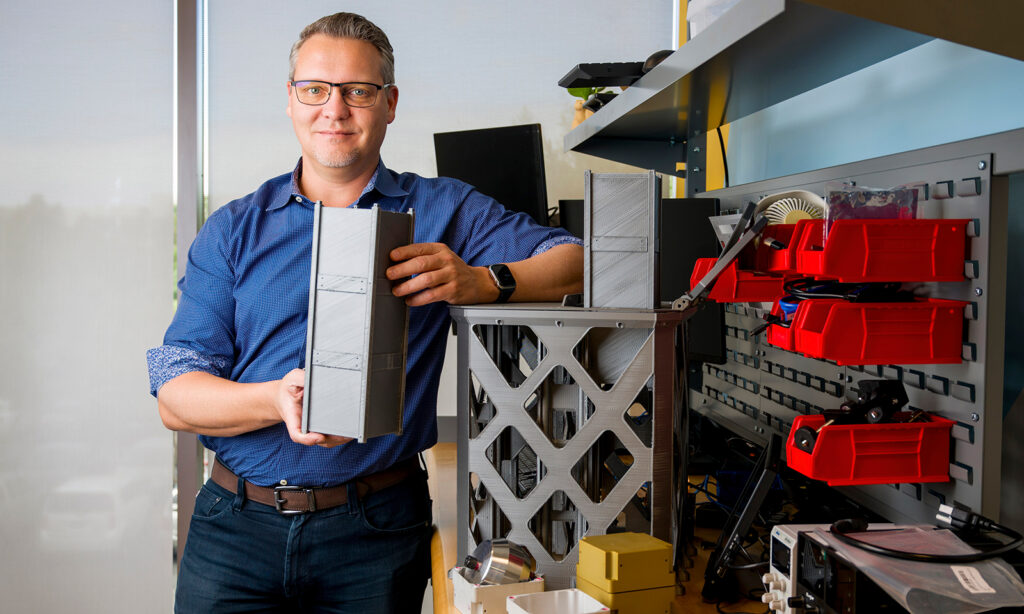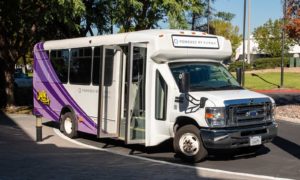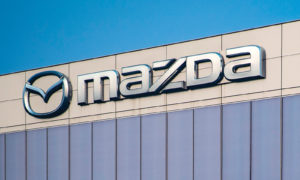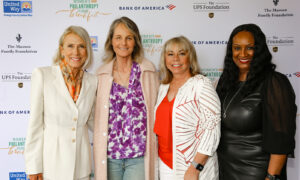Nicolaas Verheem grew up in the 1970s and ’80s – the era of “Star Trek” and “Star Wars.” He has since made a career out of space exploration by developing a pioneering video system for orbiting satellites.
“I think there is going to be a big expansion of this market,” Verheem says.
In June, the South African-born engineer moved his year-old startup, TRL11, into UCI Beall Applied Innovation at UCI Research Park. In a recent conversation, he talked about his star-studded career, the power of video, and being “psyched” about his future in Irvine.
Q: Before you founded TRL11, you won an Oscar and an Emmy – for engineering?
My team and I won those honors for my previous startup, Teradek – also based in Irvine – because we developed a system that changed the media industry by providing high-definition, wireless video transmission with very short delays. Lots of major movies have used it, including ‘Star Wars.’
Q: How do you envision that your new video equipment might be used in space?
Today there are about 4,000 low-orbiting satellites, and by 2030 there may be more than 100,000. But only a fraction of them use video, even though doing so would make the industry a lot more efficient.
The technology we’re developing, called SAVER – the Space Aware Video Edge-computer Recorder – will help satellite operators be more aware of what’s going on in and around the spacecrafts. Think of a Nest or Ring in space.
Q: What does TRL11 stand for?
It started as a joke. It refers to a NASA scale for “technology readiness level” that ranges from 1 to 9, but we want to take it further. Then it became a vision.
Q Why did you choose Irvine as a place to launch TRL11?
Irvine is a fantastic place, with great weather and a robust economy. People really want to work here, and there’s lots of expertise with a very lively satellite industry. I’m excited about the future of Irvine and happy to put up my flag here once again.
Q: Tell us about your progress.
We’ve so far raised $3 million in pre-seed money to expand our team, lease a facility and launch two prototypes into orbit. Our first launch, in January, failed (upstream from us) due to a problem with our host, but we learned a lot. With our second, in June, we were able to record 180 minutes of video and download a few seconds of it before the satellite hosting us ran out of energy. Still, this was a major milestone for us because we showed that our system could survive the trip into orbit and send back video. Building these systems isn’t easy – you have to accommodate for the environment in space, with freezing temperatures, radiation and lots of vibration.
Q: How have you learned to deal with these kinds of setbacks?
My life philosophy is that none of us learned to walk by carefully observing our parents. You have to get up and fall a few times before you walk – and then eventually you get to run. We’re just going to keep on iterating and getting better. We plan to run several more tests in the next 18 months.









